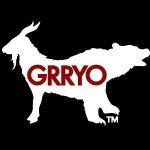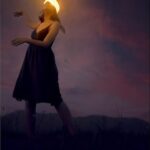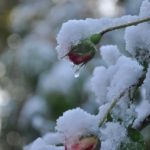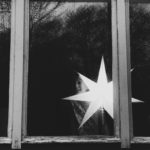When I first arrived in Peru, in 1979, photography had somehow already shaped my impression of the place. Before leaving London I had been to an exhibition of the work of Martin Chambi, the brilliant photographer from Cusco whose work from the 1920s and 30s seemed not so distant from what I was now observing …
Shadows, 1979.
The above image is about the permanence and timelessness of the indigenous presence in Cusco – that echo of a pre-colonial past which still pervades the old Inca capital.
International Bank of Peru, 1979.
For a time I had a sense of time moving more slowly than I was used to – of a world from long ago that seemed cut off from the speediness of my reality – and I set about documenting it through my photographs. ‘The New Incas’, published in 1983, was the book that resulted (and which I’m currently working on the revised edition of).
But it was the photographers who really seemed most emblematic of this. And so, in the ancient Inca capital, I began to document the world of the photographers of Cusco…
Inside the darkroom, 1979.
Shown above is a street photographer of the old school in Cusco, plying his trade in the Plaza de Armas. Having taken a portrait, here we see him actually developing the negative, which he will then re-photograph to make the final print (using the wooden slats in front of the lens to change the whole apparatus into a copy camera). The small flap on the side allows light into the “darkroom” – it’s an early form of instant photography.
Kodacolor in Cusco, 1983.
Most of the photographers in Cusco made their living doing black and white studio portraits, but they would subsidize this by selling film to the tourists. It produced some unlikely juxtapositions, as seen above.
The Chambi studio in Cusco, 1983.
The towering figure of Peruvian photography is Martin Chambi (1891-1973). Here are three generations of Chambi family, all of them photographers. Standing on the left and looking around the backdrop (in the manner of an assistant in one of Chambi’s portraits) is Teo Allain Chambi – Martin’s grandson. In the middle is Martin’s devoted daughter Julia, and on the right is her older brother, Victor. The massive glass plate camera on the table belonged to the great Martin Chambi himself.
A couple of years later I made “Martin Chambi and the Heirs of the Incas” for the BBC – sadly by that time Victor Chambi had already died, but Julia appears.
Julia Chambi, 1981.
Julia was Chambi’s middle daughter and she worked in his studio from when she was a child. After her father’s death in 1973, she took over the studio and devoted the rest of her life to looking after Chambi’s amazing photographic legacy.
Cesar Meza, Photographer, 1985.
I met him while doing research for the film about Martin Chambi (“Martin Chambi and the Heirs of the Incas”, BBC 1986). Meza had been an assistant of Chambi’s in the 1930s and later had set up his own studio in Cusco. Note the enormous 10×8 glass plate camera that he was still using. (He does a very engaging cameo performance in the film!)
Cecilia, 1981.
The street sign belonged to Cesar Meza (see my portrait of Meza, above), and Cecilia, who had grown up in Cusco, was my wife.
Eventually I managed to pull all these ideas together by persuading the BBC to finance a film about Chambi, who was at that time relatively little known.
Poster for “Martin Chambi and the Heirs of the Incas”, 1986.
The film in fact proved to be the beginning of something new for me – making movies.
Paul Yule is @paul_yule on Instagram. More about him at www.paulyule.com
About Author

Latest stories
 CommunityDecember 31, 2020We Bid Adieu
CommunityDecember 31, 2020We Bid Adieu Alexandra PrestonDecember 31, 2018December Wishes from Grryo
Alexandra PrestonDecember 31, 2018December Wishes from Grryo StoriesMarch 11, 2018The Marigoldroadblog Project by Adjoa Wiredu
StoriesMarch 11, 2018The Marigoldroadblog Project by Adjoa Wiredu Antonia BaedtDecember 22, 2017‘Tis a Jolly Grryo Christmas
Antonia BaedtDecember 22, 2017‘Tis a Jolly Grryo Christmas









